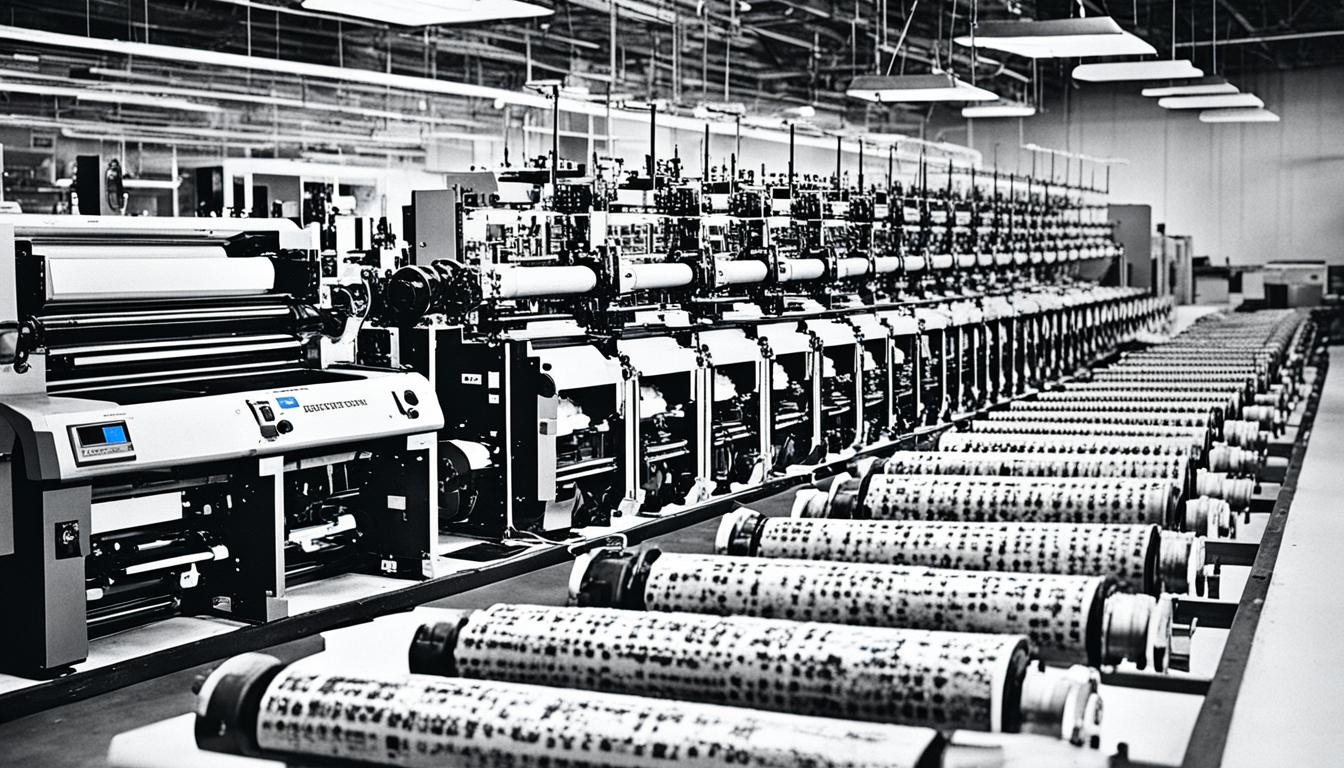Printing has undergone a remarkable evolution throughout history, shaping the way we communicate, learn, and preserve knowledge. From the early techniques of ancient civilizations to the modern advancements in digital printing, the story of printing is a fascinating journey that spans thousands of years.
Let's delve into the rich history of printing and explore how this revolutionary technology has transformed society and continues to thrive in the digital age.
Key Takeaways:
- Printing has a long and fascinating history that has played a significant role in the spread of knowledge and culture.
- Ancient printing techniques, such as cylinder seals and stamps, laid the foundation for future developments.
- The invention of paper and movable type revolutionized the printing industry.
- Johannes Gutenberg's Gutenberg press enabled mass production of books and increased printing speed.
- Modern printing techniques, such as offset, screen, inkjet, and laser printing, have further advanced the industry.
Ancient Printing Techniques: From Cylinder Seals to Stamps
The history of printing is intertwined with ancient techniques that laid the foundation for the development of more advanced methods in the future. Let's explore two of these ancient printing techniques: cylinder seals and stamps.
Cylinder Seals
The Mesopotamians, an ancient civilization in the region of modern-day Iraq, were pioneers in the use of cylinder seals for printing images. Cylinder seals were small, round objects carved with intricate designs or text. These seals were rolled onto clay tablets, leaving behind impressions of the carved patterns.
By using cylinder seals, the Mesopotamians could reproduce symbols, religious scenes, and administrative information on tablets, creating records of various aspects of their society. This method of printing was highly efficient and served as a means of communication and documentation.
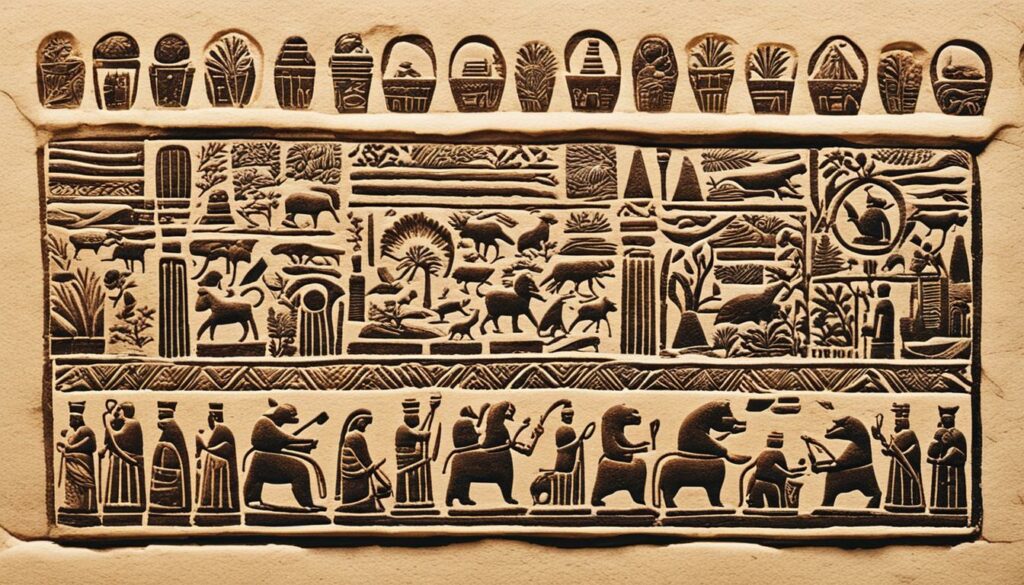
Stamps
Similar to cylinder seals, stamps were also used as early printing tools. Civilizations in China and Egypt adopted stamping methods to print on various materials.
In China, small stamps were made from stone or other materials and used to apply inked images or texts onto cloth. These stamps allowed for the mass production of patterns and symbols, contributing to the development of textile printing.
In Egypt, stamps made from wood or clay were utilized to print on fabrics and papyrus. They were instrumental in creating decorative motifs and inscriptions on these materials.
Both cylinder seals and stamps demonstrate the ingenuity and creativity of ancient civilizations in developing printing techniques to convey information, record history, and embellish various objects.
The Invention of Paper and Movable Type
The invention of paper and movable type in ancient China played a crucial role in the development of printing technology. These innovations paved the way for the dissemination of knowledge and the mass production of written materials.
In the 2nd century AD, the Chinese eunuch Ts’ai Lun revolutionized the world by inventing paper. Prior to this invention, various materials such as papyrus, silk, and bamboo strips were used for writing. However, Ts’ai Lun's breakthrough in creating a versatile and affordable writing surface made a significant impact on the printing industry.
Movable Type: A Groundbreaking Concept
Around the same time, a Chinese man named Pi-Sheng introduced the concept of movable type. He crafted individual characters from hardened clay, allowing for the rearrangement and reuse of these characters to create different texts. Although Pi-Sheng's initial attempts at movable type were not widely adopted, his pioneering work laid the foundation for future advancements in printing.
These early innovations in movable type, though limited in their usage, sparked curiosity and experimentation among scholars and inventors. The possibilities of movable type's efficient replication of text intrigued the minds of many, setting the stage for the later developments that would revolutionize the printing world.
“The invention of paper and movable type set the stage for a printing revolution.” – [Source]
The importance of paper as a writing material and movable type as a means of mass reproduction cannot be overstated. These inventions transformed the way information was disseminated and made printing more accessible to a wider audience.

| Year | Event |
|---|---|
| 2nd century AD | Chinese eunuch Ts’ai Lun invents paper. |
| 2nd century AD | Chinese man Pi-Sheng develops movable type characters from hardened clay. |
| [Year] | [Event] |
| [Year] | [Event] |
| [Year] | [Event] |
Woodblock Printing and the Gutenberg Press
Woodblock printing has a rich history that dates back to ancient China, where it was widely used for reproducing text and images. The process involves carving a design or text into a wooden block, inking it, and then pressing it onto paper or other surfaces. This technique allowed for the mass production of books, artwork, and textiles, making it a significant development in the history of printing.
In the 15th century, woodblock printing made its way to Europe and gained popularity as an art form. It allowed for the widespread dissemination of religious texts, illustrations, and playing cards. Woodblock prints were often intricate and detailed, showcasing the skill and craftsmanship of the artists.
Johannes Gutenberg, a German blacksmith and inventor, revolutionized printing with his invention of the Gutenberg press in the 15th century. Unlike woodblock printing, the Gutenberg press used movable metal type. The individual letters, or type, could be rearranged to create different combinations, making it easier to print multiple copies of a document quickly.
The Gutenberg press was a game changer for the printing industry. It allowed for the mass production of books, making them more affordable and accessible to the general public. This innovation played a crucial role in the dissemination of knowledge during the Renaissance and beyond.
Here's a comparison of woodblock printing and the Gutenberg press:
| Woodblock Printing | Gutenberg Press |
|---|---|
| Requires carving a new block for each page | Uses reusable metal type |
| Time-consuming and labor-intensive | Significantly faster and more efficient |
| Limited to reproducing fixed designs | Allows for flexible typesetting |
While woodblock printing and the Gutenberg press are distinct printing techniques, they both played crucial roles in the evolution of printing and the spread of knowledge. These innovations paved the way for the printing methods we use today and continue to shape the world of communication and information dissemination.
Advancements in Printing: Etching and Lithography
In the ever-evolving world of printing, advancements have continually pushed the boundaries of what is possible. Two notable techniques that revolutionized the industry are etching and lithography. These breakthroughs propelled printing into a new era of precision and versatility.
Etching: A Finer Approach to Printing
Etching, introduced in the 16th century, allowed for the creation of highly detailed and intricate printed images. By using acid to etch designs onto metal plates, printers could achieve remarkable precision and delicacy in their prints. This technique became particularly popular in the production of fine art prints, enabling artists to showcase their creativity with unparalleled clarity.
Etching opened up new avenues for artistic expression and expanded the possibilities of printed media. With its ability to capture intricate details and textures, this technique became a vital tool in the world of graphic arts.
Lithography: Harnessing the Chemistry of Printing
Lithography emerged in the late 18th century as a groundbreaking printing technique. Unlike traditional methods, which relied on a relief or intaglio process, lithography utilized the chemical properties of oil and water to create images. A greasy ink was applied to a smooth surface, typically a limestone plate, which then attracted ink and repelled water.
This method brought several advantages to the printing industry. It allowed for quick reproduction of complex designs, making it favorable for commercial purposes such as advertising and packaging. Furthermore, lithography made it possible to print on a variety of surfaces, including paper, fabric, and metal. This flexibility expanded the potential applications of printing and made it more accessible to a broader audience.
The Impact of Etching and Lithography on Printing
The advent of etching and lithography marked significant milestones in the advancement of print technology. These techniques offered unparalleled precision, detail, and versatility, expanding the horizons of what could be achieved through printing.
To illustrate the impact of etching and lithography, consider the table below, which highlights key features and benefits of both techniques:
| Advancements | Etching | Lithography |
|---|---|---|
| Printing Process | Acid etching on metal plates | Chemical interaction between oil and water |
| Detail and Precision | Offers intricate, finely detailed prints | Allows for high-quality reproductions with clarity |
| Applicable Surfaces | Primarily paper-based | Paper, fabric, metal, and more |
| Applications | Fine art prints and graphic arts | Commercial printing, packaging, advertising |
As demonstrated by the table, each technique brought unique advantages to the printing industry, cementing their importance in the history of printing advancements.
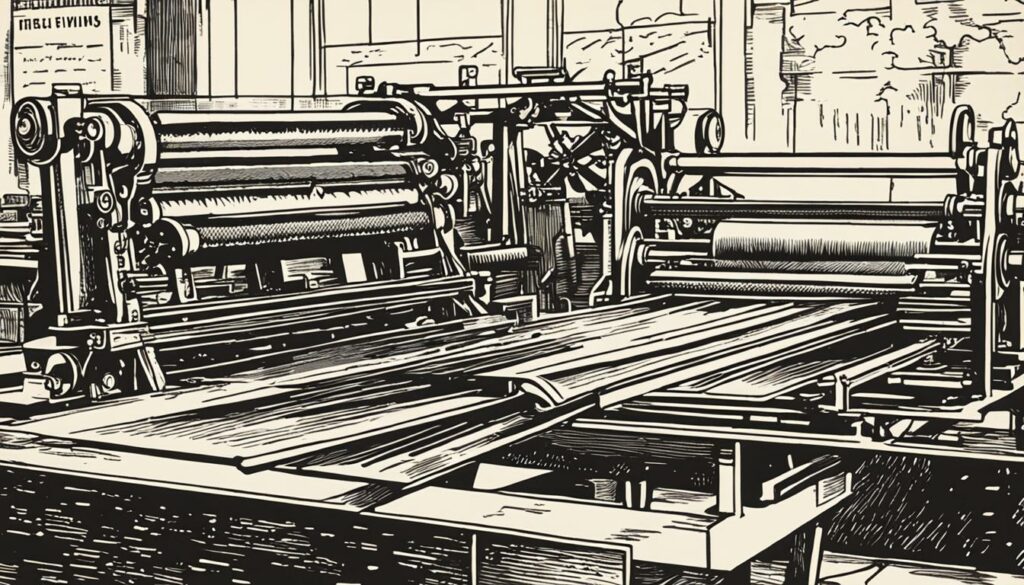
Next, we will explore the modern printing techniques that have emerged in recent years, shaping the way we produce and interact with printed materials.
Modern Printing Techniques: Offset, Screen, Inkjet, and Laser Printing
In the 19th and 20th centuries, the development of modern printing techniques revolutionized the industry, making printing faster, more efficient, and more versatile. Today, we rely on a range of advanced methods to bring our ideas from screen to paper.
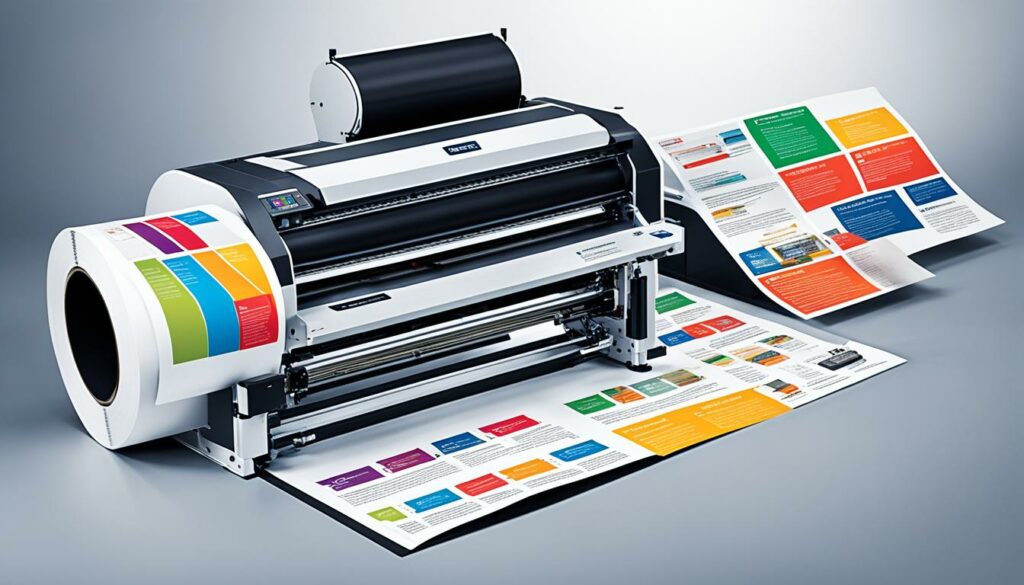
Offset Printing
One of the most widely used modern printing techniques is offset printing. This method involves transferring ink from a plate to a rubber blanket and then onto the printed surface. Offset printing is known for its exceptional quality, sharpness, and consistency, making it ideal for large-scale printing projects such as newspapers, magazines, and brochures.
Screen Printing
Screen printing is a versatile technique that allows for printing on various materials, including textiles, plastics, and glass. A stencil, also known as a screen, is used to transfer ink onto the desired surface. This method offers excellent color vibrancy, durability, and the ability to print on uneven surfaces.
Inkjet Printing
Inkjet printing has become a popular choice for home and office printing. This method utilizes microscopic droplets of ink that are propelled onto the paper. Inkjet printers offer high-resolution prints with vibrant colors, making them suitable for a wide range of applications, from documents and photos to professional graphics.
Laser Printing
Laser printing relies on laser technology to create static electricity patterns on a drum, which attract and fuse toner particles onto the paper. Laser printers are known for their speed, sharpness, and precision, making them a popular choice for high-volume printing in both home and office environments.
With modern printing techniques like offset printing, screen printing, inkjet printing, and laser printing, the possibilities for bringing our ideas to life on paper have expanded dramatically. These methods have made printing more accessible, efficient, and customizable, shaping the way we communicate and present information.
Comparison of Modern Printing Techniques
| Printing Technique | Advantages | Disadvantages |
|---|---|---|
| Offset Printing |
|
|
| Screen Printing |
|
|
| Inkjet Printing |
|
|
| Laser Printing |
|
|
Each printing technique has its unique advantages and considerations, allowing us to choose the most appropriate method for our specific printing needs. Whether it's the exceptional quality of offset printing, the versatility of screen printing, the accessibility of inkjet printing, or the speed of laser printing, modern techniques offer unprecedented possibilities for bringing our ideas to life.
Digital Printing and the Future of Printing Technology
With the advent of digital technology, the landscape of printing has undergone a significant transformation. The emergence of digital printing has revolutionized the industry, offering new possibilities and capabilities that were unimaginable in the past. Digital printing refers to the process of directly printing digital files onto various substrates, eliminating the need for traditional printing plates. This advancement in technology has not only made printing more accessible and efficient but has also opened up a world of opportunities for creativity and customization.

One of the key advantages of digital printing is its versatility. It allows for precise and high-quality prints on a wide range of materials, from paper and fabric to ceramics and metal. This flexibility makes it suitable for diverse applications, including commercial printing, packaging, signage, and even personalized products. Digital printing enables businesses and individuals to bring their creative visions to life with vibrant colors, intricate details, and quick turnaround times.
In addition to its versatility, digital printing offers enhanced cost efficiency and reduced waste. Unlike traditional printing methods that often require high setup costs, digital printing allows for on-demand printing, eliminating the need for large print runs. This not only helps businesses optimize their inventory management but also reduces the environmental impact associated with excessive printing.
“Digital printing has transformed the way we approach printing projects. It has made the process faster, more efficient, and more accessible to a wider audience. The possibilities for the future of digital printing are endless, and we can expect to see even more advancements in terms of print quality, speed, and compatibility with different substrates.”
– Jane Peterson, Printing Industry Expert
As technology continues to advance, the future of printing holds exciting possibilities. One such advancement is the emergence of 3D printing, also known as additive manufacturing. 3D printing allows for the creation of three-dimensional objects by layering materials based on digital designs. This technology has already made significant strides in various industries, including healthcare, automotive, and aerospace.
Furthermore, ongoing research and development in print materials are paving the way for innovative applications. Scientists are exploring new ink formulations, conductive inks for printed electronics, and even bioactive inks for medical purposes. These advancements will further expand the capabilities of digital printing, enabling the creation of functional and interactive printed products.
In conclusion, digital printing has revolutionized the printing industry, offering increased versatility, cost efficiency, and reduced waste. As technology continues to progress, the future of printing holds tremendous potential. From the possibilities of 3D printing to the development of new print materials, the evolution of printing technology is set to reshape various industries and unlock new realms of creativity.
Printing in Different Cultures: East Asian and Western Printing Traditions
Printing techniques and traditions have evolved differently across various cultures, resulting in distinct East Asian and Western printing traditions. Understanding the cultural and historical context of printing adds depth to our appreciation of this important technology.
East Asian Printing
East Asian printing has a rich and ancient history, dating back thousands of years. Woodblock printing played a significant role in East Asian cultures, particularly in China and Japan. This technique involved carving images or characters into wooden blocks and then applying ink to the block surface to transfer the impression onto paper or fabric.
This traditional printing method allowed for intricate and detailed artwork, such as the famous woodblock prints of Japanese ukiyo-e artists like Katsushika Hokusai and Utagawa Hiroshige. Woodblock printing also contributed to the spread of literature, religious texts, and other important cultural materials in East Asia.
| Features | East Asian Printing |
|---|---|
| Technique | Woodblock Printing |
| Key Advancements | Movable Type |
| Historical Significance | Spread of knowledge, culture, and artistic expression in East Asia |
| Notable Examples | Japanese ukiyo-e prints, Chinese calligraphy scrolls |
Western Printing
In the Western world, printing traditions were deeply influenced by the invention of the printing press by Johannes Gutenberg in the 15th century. The Gutenberg press, which utilized movable metal type, revolutionized the spread of knowledge and led to the mass production of books.
The development of Western printing traditions coincided with the spread of literacy during the Renaissance and the Enlightenment. The availability of printed materials, such as books, pamphlets, and newspapers, played a crucial role in shaping Western culture, politics, and intellectual discourse.
| Features | Western Printing |
|---|---|
| Technique | Movable Type Printing |
| Key Advancements | The Gutenberg Press |
| Historical Significance | Spread of knowledge, literacy, and the growth of intellectual movements |
| Notable Examples | Early printed books like the Gutenberg Bible, political pamphlets, scientific journals |
The comparison of East Asian and Western printing traditions highlights the unique approaches and contributions each culture has made to the development of printing technology. Together, these traditions have shaped the way we disseminate knowledge, preserve culture, and appreciate the art of print.
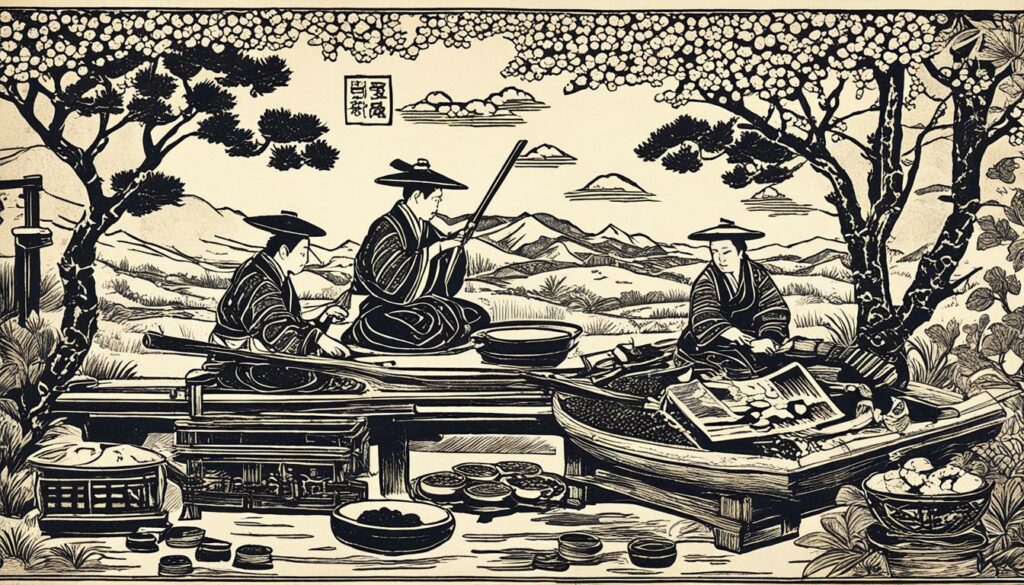
The Impact of Printing on Society and Knowledge
The invention of printing, particularly the Gutenberg press, had a profound impact on society and knowledge. It democratized access to information, allowing for the widespread dissemination of ideas. The printing press played a key role in the Renaissance and the Scientific Revolution, fueling advancements in science, literature, and education.
“Printing is the ultimate weapon in the defense of freedom of speech.” – Roy Barnes
Before the invention of the printing press, the dissemination of knowledge was limited to handwritten manuscripts, which were time-consuming and costly to produce. As a result, access to information was restricted to a privileged few. However, with the advent of the Gutenberg press in the 15th century, the ability to print books quickly and efficiently revolutionized the spread of knowledge.
Books became more affordable and accessible, leading to an explosion of literacy and intellectual growth. The printing press enabled the sharing of ideas across borders and cultures, sparking collaboration and innovation. It laid the foundation for the scientific method, making it possible to disseminate and build upon knowledge gained through experiment and observation.
The Printing Press and the Renaissance
The impact of printing on society is perhaps most evident during the Renaissance, a period of great intellectual and cultural rebirth in Europe. The printing press played a crucial role in the dissemination of classical works, which had been largely forgotten or lost to time. Ancient texts and ideas were made accessible to scholars and the general public alike, fueling a renewal of interest in art, literature, philosophy, and science.
The ability to distribute knowledge quickly and in large quantities contributed to the growth of universities and the rise of the educated middle class. Education became more widely available, empowering individuals with the tools to challenge existing beliefs and question authority.
The Printing Press and the Scientific Revolution
The printing press also had a profound impact on the Scientific Revolution of the 16th and 17th centuries. Scientific discoveries and theories could be published and shared with a wider audience, allowing for the exchange of ideas and the refinement of scientific knowledge.
Scientists such as Galileo Galilei and Isaac Newton were able to communicate their findings and theories through printed works, fostering a global community of researchers. The printing press facilitated the collaboration and dissemination of scientific knowledge, accelerating the pace of discovery and ushering in an era of unparalleled scientific progress.
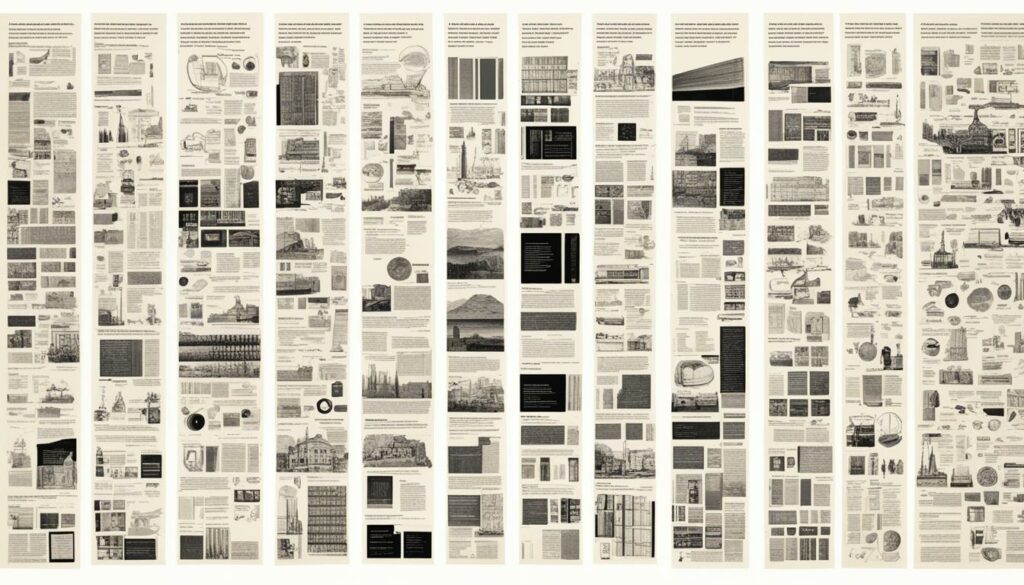
| Impact of Printing | Society | Knowledge |
|---|---|---|
| Democratized access to information | Increased literacy and education | Dissemination of scientific discoveries |
| Facilitated cultural and intellectual growth | Encouraged the spread of ideas | Promoted collaboration and innovation |
| Enabled the rise of the educated middle class | Challenged traditional authority | Preserved and revived ancient texts |
The impact of printing on society and knowledge cannot be overstated. It transformed the way we communicate, learn, and discover. Printing brought about a new era of enlightenment, empowering individuals with the tools to shape their own destiny and contribute to the collective wisdom of humanity.
The Continued Relevance of Printing in the Digital Age
As we navigate the digital age, it's undeniable that technology has revolutionized the way we consume information. From e-books to online articles, digital media offers convenience and accessibility like never before. However, amidst this digital transformation, printing still maintains a significant role in our lives.
Printed materials, such as books, magazines, and physical documents, continue to hold relevance in today's society. They offer a unique reading experience that digital media cannot fully replicate. The tactile sensation of flipping through pages and the scent of ink on paper create a sensory connection that engages our senses in a way that screens cannot.
Furthermore, print provides a sense of permanence that digital media often lacks. In an era where online content can be deleted or altered with a single click, printed materials offer a tangible record of information. Books and physical documents can be preserved for years, serving as valuable resources and historical artifacts.
“Print is the sharpest and the strongest weapon of our party.”
– Joseph Stalin
Printed materials also have a unique ability to cater to different learning styles and preferences. For some individuals, reading from a physical book enhances comprehension and retention. Studies have shown that reading on paper allows for better focus and understanding of complex concepts compared to reading on a screen.
Additionally, print media serves various sectors and industries that rely on physical documentation. Legal contracts, medical records, and official documents often require hard copies for legal and archival purposes. The printed form continues to be essential in these contexts, ensuring accuracy, security, and accessibility.
In recognition of the continued relevance of printing, let's take a closer look at its advantages in the digital age:
Advantages of Printing in the Digital Age:
- Enhanced reading experience: The tactile nature of print engages our senses and provides a unique reading experience.
- Sense of permanence: Printed materials offer longevity and serve as tangible records of information.
- Catering to different learning styles: Physical books and printed documents cater to those who prefer a non-digital reading experience.
- Legal and official requirements: Certain sectors and industries rely on physical documents for legal, archival, and security reasons.
To illustrate the continued relevance of printing, consider the following table showcasing book sales versus e-book sales:
| Year | Book Sales (in millions) | E-book Sales (in millions) |
|---|---|---|
| 2015 | 675 | 223 |
| 2016 | 652 | 189 |
| 2017 | 687 | 189 |
| 2018 | 675 | 161 |
| 2019 | 690 | 144 |
This data clearly demonstrates that despite the rise of e-books, print book sales have remained relatively stable over the years, highlighting the enduring appeal of physical books in the digital age.
While digital technology continues to evolve, printing retains its relevance and importance. It offers a tangible and sensory experience, a sense of permanence, and serves various practical purposes in sectors that rely on physical documentation. The journey of printing through ancient techniques to modern advancements has been a testament to human ingenuity, and its continued relevance in the digital age showcases the resilience of this timeless medium.

The Journey of Printing: From Ancient Techniques to Modern Advancements
The history of printing is a fascinating tale of human ingenuity and our unwavering quest to communicate and preserve knowledge. It all began with ancient techniques like cylinder seals and woodblock printing, which laid the foundation for the groundbreaking advancements we enjoy today.
Ancient civilizations, such as the Mesopotamians and the Chinese, utilized cylinder seals and stamps to imprint images onto various surfaces. These primitive methods may seem rudimentary compared to our modern technologies, but they were revolutionary in their time, allowing for the replication of symbols, messages, and cultural expressions.
But it was Johannes Gutenberg's invention of the Gutenberg press in the 15th century that truly revolutionized the printing industry. The introduction of movable metal type enabled the mass production of books, making knowledge and information accessible to a wider audience. This pivotal moment marked a significant turning point in the history of printing.
Fast forward to the present, and we find ourselves in the era of digital printing, where cutting-edge technologies have opened up new horizons. The continuous evolution of printing technology has brought us advancements like offset printing, screen printing, inkjet printing, and laser printing. These modern techniques have expanded the possibilities of printing, from large-scale production to intricate detail, vibrant colors, and efficient printing processes.
The journey of printing is a testament to human progress and innovation. From the ancient techniques that laid the groundwork to the modern advancements that continue to push the boundaries, printing has shaped our world and will undoubtedly shape our future, as we constantly strive for more efficient and sustainable ways to communicate and share information.

I'm Morgan, the creator of VPNForMe — a site born from too many hours spent side-eyeing sketchy VPN reviews and buffering videos.
I wanted a place where people could get straight answers about privacy, streaming access, and which VPNs actually deliver — without the hype or tech jargon.

